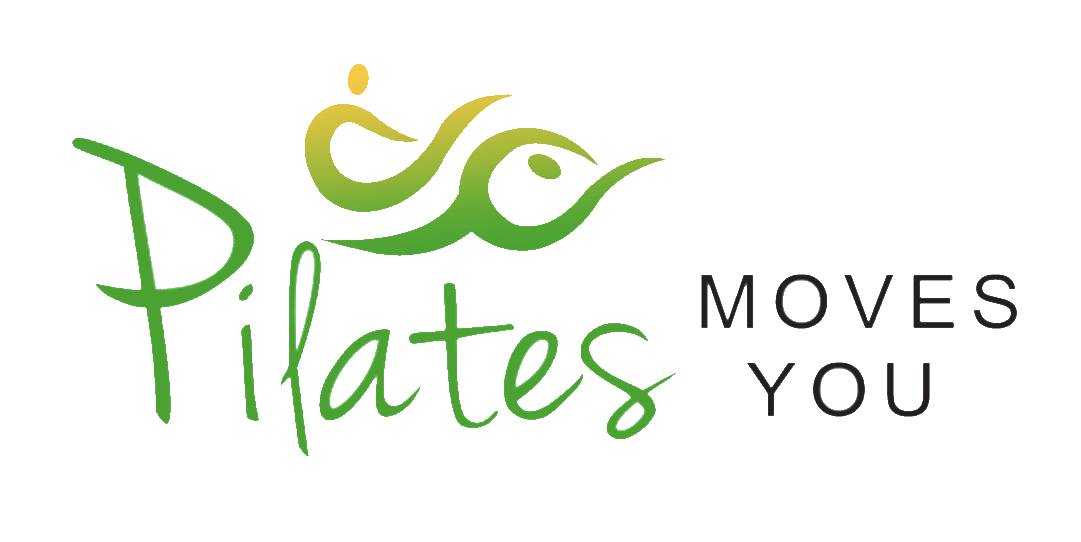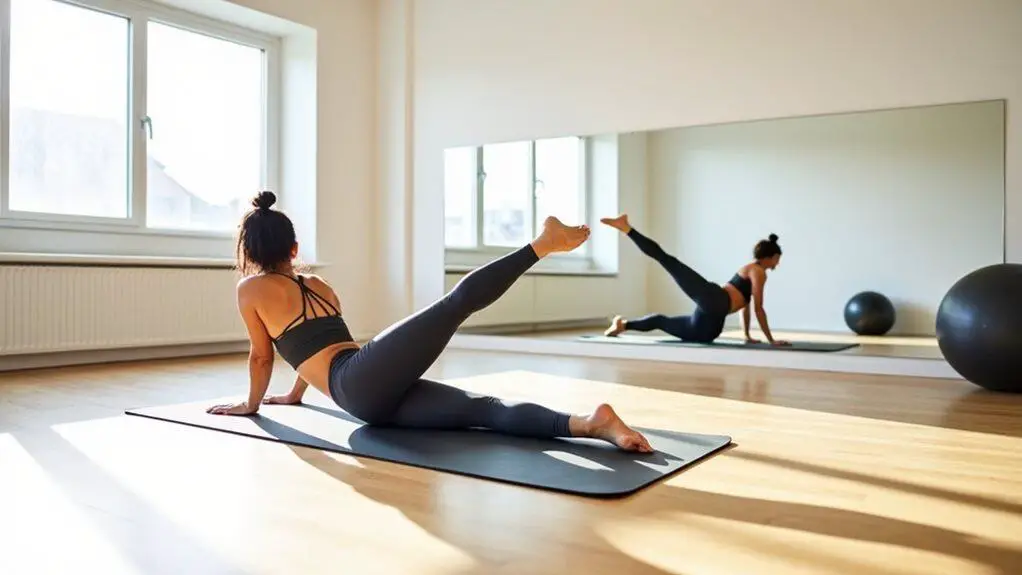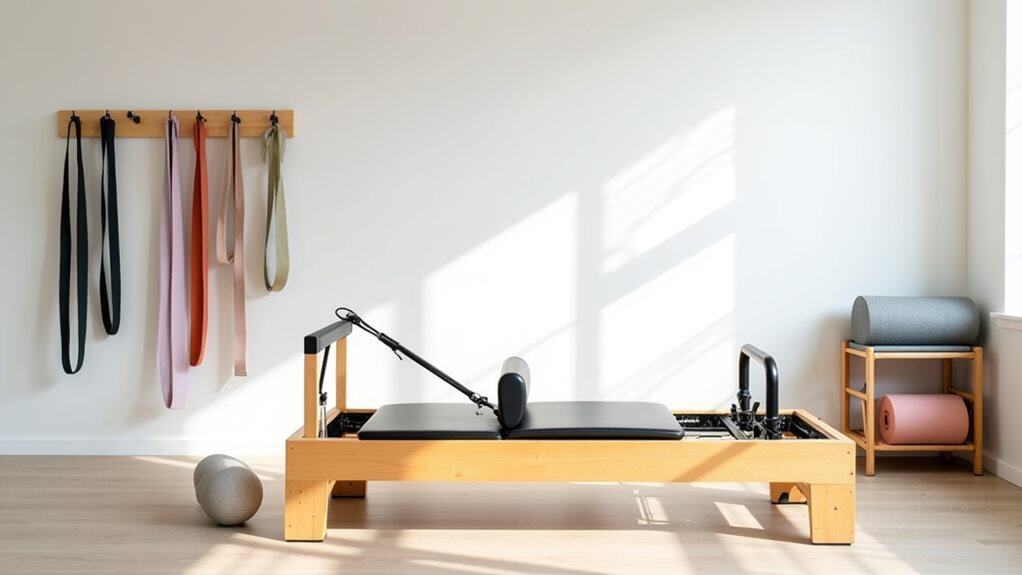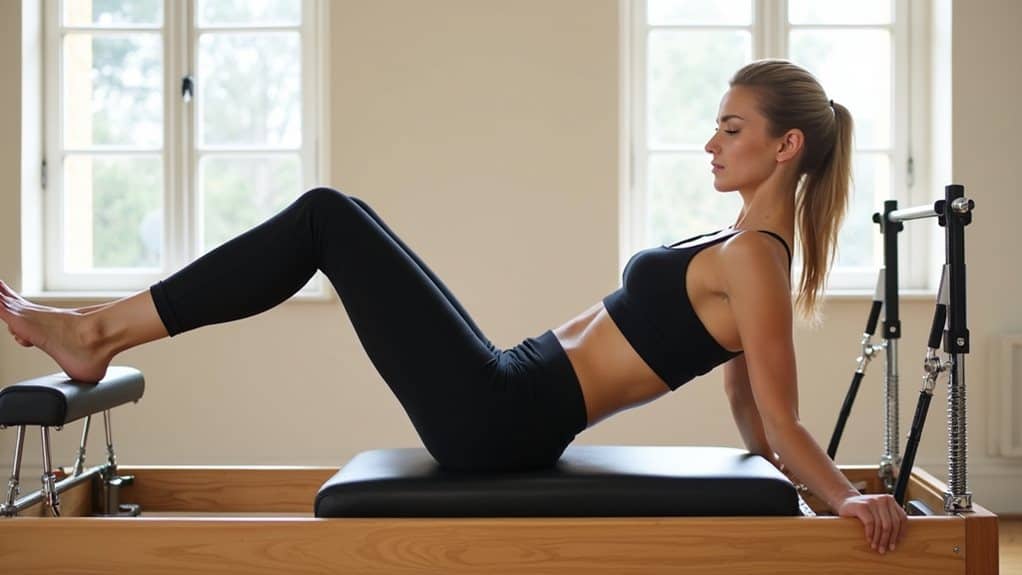The intricate dance of inhalation and exhalation, a rhythmic balance we often take for granted, is foundational to our vitality and well-being. Yet, as we navigate the complexities of modern life, replete with sedentary habits and persistent stressors, the full potential of our respiratory system can remain untapped.
Pilates exercises can improve diaphragmatic breathing and strengthen intercostal muscles, enhancing lung capacity and promoting more efficient oxygen exchange. Regular practice can lead to deeper breaths, better posture, and increased respiratory efficiency.
Exploring unconventional avenues to unlock this potential reveals a timeless practice that, while known for its core strengthening benefits, might hold the key to deeper, more nourishing breaths. Let’s embark on this journey to unearth the transformative intersection of movement and breath.
Pilates Principles: Foundation of Respiratory Improvement
Joseph Pilates, the creator of this transformative exercise method, once said, “Breathing is the first act of life and the last.” He recognized the vital connection between optimal breathing and overall health. Built on a set of core principles, Pilates provides a holistic approach that extends beyond mere physical fitness to influence respiratory function profoundly.
1. Centering:
At the heart of every Pilates exercise is centering, which refers to the ‘powerhouse’—the area encompassing the lower abdomen, lower back, and buttocks. By focusing on this core, practitioners can establish a strong foundation that supports and enhances respiratory mechanics.
2. Concentration:
Pilates is not just about movement; it’s about mindful movement. Concentration ensures that each exercise is performed with utmost precision and efficiency. This attention to detail leads to better muscle activation, including those involved in respiration.
3. Control:
Control in Pilates prevents careless, unguided movements. Every motion is deliberate, ensuring that muscles, including the diaphragm and intercostals, are engaged and trained effectively without undue strain.
4. Precision:
Movement accuracy is paramount in Pilates. When applied to breathing exercises, this precision maximizes oxygen intake and fully expels carbon dioxide, optimizing gas exchange.
5. Flow:
Pilates emphasizes fluidity in all exercises. Such a seamless flow ensures that muscles work in harmony. This translates to smooth, unobstructed inhalations and exhalations for the respiratory system.
6. Breath:
Arguably, the most pertinent principle, breathing in Pilates, is neither passive nor overlooked. Exercises incorporate specific breathing patterns, expanding the ribcage laterally on inhalation and contracting efficiently on exhalation. This active engagement helps in increasing lung capacity and improving diaphragmatic function.
By grounding itself in these fundamental principles, Pilates offers a structured pathway to respiratory improvement. When one aligns physical movement with intentional breath, the resulting synergy can pave the way for a rejuvenated respiratory system and, by extension, enhanced overall well-being.
Techniques and Exercises: Pilates for Optimal Breathing
Pilates is a treasure trove of exercises that cater to various aspects of physical health. Certain techniques and exercises stand out when it comes to enhancing lung function and promoting optimal breathing. By integrating these into your routine, you can tap into the transformative potential of Pilates for respiratory wellness.
1. The Pilates Breath:
This foundational technique involves deep, diaphragmatic breathing emphasizing lateral ribcage expansion.
- How to: Sit or lie down comfortably. Inhale deeply through the nose, allowing the ribcage to expand to the sides. Exhale fully through pursed lips, engaging the core and imagining the ribcage narrowing and descending.
2. The Saw:
This exercise not only stretches the spine but also encourages deep breathing.
- How to: Sit tall with legs extended wide. Extend arms to the side at shoulder height. As you inhale, twist your torso to one side. As you exhale, reach the opposite hand towards the foot of the turned side, resembling the motion of a saw.
3. The Swan:
It is ideal for opening up the chest and facilitating deeper inhalations.
- How to: Lie face down with arms bent, hands near shoulders. Inhale as you lift the upper body off the ground, pressing palms into the mat. Exhale as you lower back down.
4. The Hundred:
A core-strengthening exercise that also emphasizes rhythmic breathing.
- How to: Lie on your back. Lift your legs to a tabletop position and raise the head, neck, and shoulders. Pump arms up and down while inhaling for a count of five and exhaling for a count of five, repeating ten times to complete a hundred pumps.
5. The Side Kick Series:
This exercise promotes ribcage mobility and enhances breath control.
- How to: Lie on one side, propped up on the elbow. Keeping legs straight, kick the top leg forward and backward in controlled motions, synchronizing with deep inhalations and exhalations.
6. Spine Stretch Forward:
Excellent for diaphragmatic engagement and lung expansion.
- How to: Sit tall with legs extended in front of you, wider than hip-distance apart. Inhale deeply, and as you exhale, round the spine forward, reaching hands towards the toes.
Integrating these exercises into your Pilates regimen can catalyze improved lung capacity and overall breathing quality. Remember, consistency is key. Over time, as you commit to these practices, the boundaries of your respiratory potential can expand, leading to a breath that truly revitalizes.
Beyond Capacity: Holistic Benefits of Improved Respiration
While the primary goal might be enhancing lung capacity, the journey to better breathing through Pilates reveals holistic benefits throughout our physical, mental, and emotional domains. Improved respiration transcends the confines of the lungs, acting as a keystone that supports and elevates numerous facets of our overall well-being.
1. Cardiovascular Health:
Increased lung capacity facilitates better blood oxygenation, efficient nutrient delivery, and toxin removal. This reduces strain on the heart, promoting overall cardiovascular health.
2. Cognitive Boost:
The brain thrives on oxygen. Enhanced breathing ensures a consistent and ample supply, potentially leading to improved concentration, sharper memory, and quicker cognitive responses.
3. Stress Reduction:
Deep, rhythmic breathing, a cornerstone of Pilates, activates the body’s parasympathetic system, or the “rest and digest” mode. This diminishes stress hormone production, fostering a state of calm and relaxation.
4. Improved Digestion:
Optimal breathing supports better blood flow, which benefits the digestive organs. This can lead to improved nutrient absorption and efficient waste elimination.
5. Enhanced Physical Endurance:
A well-oxygenated body can sustain physical activities for longer durations without fatigue, paving the way for improved athletic performance and daily energy levels.
6. Emotional Balance:
Breathing deeply and mindfully can act as an anchor, grounding us during tumultuous emotional states. It offers a tool to navigate anxiety, anger, or sadness, fostering emotional equilibrium.
7. Postural Perfection:
Many Pilates exercises that target breathing also emphasize spinal alignment and core strength. The resultant posture supports the lungs, radiates confidence, and reduces musculoskeletal strain.
8. Immune System Support:
Optimal respiratory function ensures that vital organs receive a steady stream of oxygenated blood, bolstering the body’s natural defense mechanisms and enhancing its ability to combat pathogens.
By cultivating better breathing habits and actively working on lung capacity through Pilates, we inadvertently unlock a trove of benefits that touch nearly every aspect of our lives. It’s a reminder that the act of respiration, while seemingly mundane, holds the profound potential to reshape our health and vitality from the inside out.
Sources:
https://medfitnetwork.org/public/all-mfn/5-pilates-exercises-to-improve-respiratory-function/
https://www.physio-pedia.com/Physiotherapy_and_Pilates_to_Improve_Pulmonary_Function




